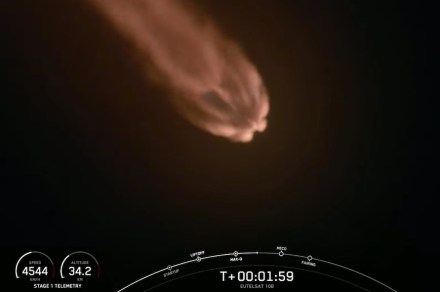[ad_1]

SpaceX despatched one in every of its first-stage boosters skyward for the eleventh time on Tuesday night. Nevertheless, in contrast to its 10 earlier flights, this time it didn’t return.
The mission launched from House Launch Complicated 40 (SLC-40) at Cape Canaveral House Drive Station in Florida at 9:57 p.m. ET, lighting up the night time sky because the Falcon 9 rocket roared towards house.
Thirty-five minutes after leaving the launchpad, the Falcon 9’s second stage deployed a communications satellite tv for pc to a geosynchronous switch orbit for French satellite tv for pc operator Eutelsat.
The Falcon 9’s first-stage booster was SpaceX’s oldest lively rocket and beforehand supported the launch of the Telstar 18V and Iridium-8 missions, in addition to 9 missions deploying Starlink web satellites.
SpaceX normally lands its first-stage Falcon 9 boosters shortly after launch, however as this mission required extra energy to deploy the 12,000-pound satellite tv for pc into orbit, there wasn’t sufficient gas to deliver the booster again.
Utilizing the identical part time and again has allowed SpaceX to supply launch companies at extra aggressive costs because it doesn’t have to construct a model new rocket for every mission. However as Tuesday’s flight demonstrated, often it’s simply not doable to deliver it dwelling.
This was the 52nd mission involving a Falcon 9 rocket in 2022, with 12 extra deliberate earlier than the tip of the 12 months. It signifies that 2022 will likely be SpaceX’s busiest up to now by way of Falcon 9 missions, smashing final 12 months’s document of 31 launches.
In the beginning of this month, SpaceX additionally launched its extra highly effective Falcon Heavy rocket for the primary time in three years in a mission for the U.S. House Drive.
It’s additionally getting ready for the maiden launch of its next-generation Tremendous Heavy rocket, which can change into essentially the most highly effective rocket ever to fly when it will definitely lifts off. NASA is planning to make use of the spacecraft part of the car to land the primary girl and first particular person of coloration on the lunar floor within the Artemis III mission at present slated for 2025.
Editors’ Suggestions
[ad_2]
Source link


